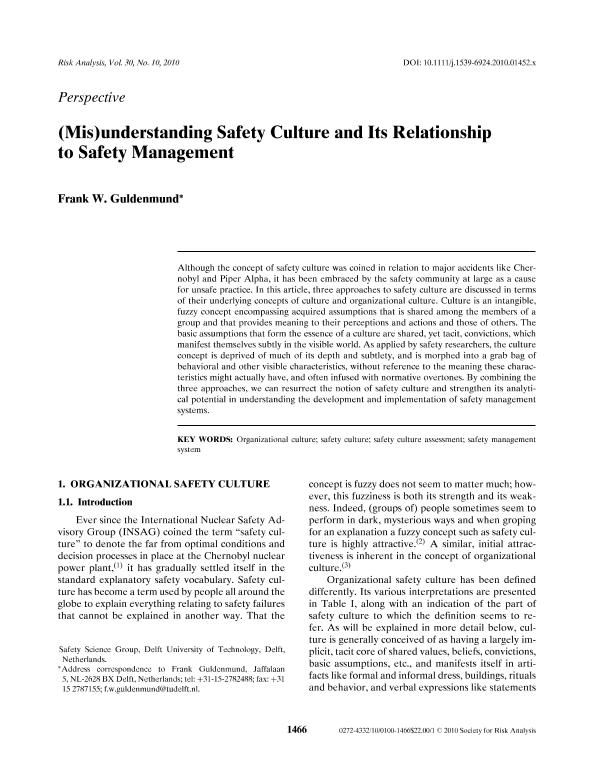(Mis)understanding safety culture and its relationship to safety management

Contenido multimedia no disponible por derechos de autor o por acceso restringido. Contacte con la institución para más información.
| Tag | 1 | 2 | Valor |
|---|---|---|---|
| LDR | 00000cab a2200000 4500 | ||
| 001 | MAP20100092323 | ||
| 003 | MAP | ||
| 005 | 20101207115136.0 | ||
| 008 | 101102e20101001esp|||p |0|||b|spa d | ||
| 040 | $aMAP$bspa$dMAP | ||
| 084 | $a7 | ||
| 100 | $0MAPA20100059876$aGuldenmund, Frank W. | ||
| 245 | 0 | 1 | $a(Mis)understanding safety culture and its relationship to safety management |
| 520 | $aAlthough the concept of safety culture was coined in relation to major accidents like Chernobyl and Piper Alpha, it has been embraced by the safety community at large as a cause for unsafe practice. In this article, three approaches to safety culture are discussed in terms of their underlying concepts of culture and organizational culture. Culture is an intangible, fuzzy concept encompassing acquired assumptions that is shared among the members of a group and that provides meaning to their perceptions and actions and those of others. The basic assumptions that form the essence of a culture are shared, yet tacit, convictions, which manifest themselves subtly in the visible world. As applied by safety researchers, the culture concept is deprived of much of its depth and subtlety, and is morphed into a grab bag of behavioral and other visible characteristics, without reference to the meaning these characteristics might actually have, and often infused with normative overtones. By combining the three approaches, we can resurrect the notion of safety culture and strengthen its analytical potential in understanding the development and implementation of safety management systems. | ||
| 650 | 1 | $0MAPA20080588953$aAnálisis de riesgos | |
| 650 | 1 | $0MAPA20080591182$aGerencia de riesgos | |
| 650 | 1 | $0MAPA20080610968$aGestión de la seguridad | |
| 650 | 1 | $0MAPA20080604394$aValoración de riesgos | |
| 773 | 0 | $wMAP20077000345$tRisk analysis : an international journal$dMcLean, Virginia : Society for Risk Analysis, 1987-2015$x0272-4332$g01/10/2010 Tomo 30 Número 10 - 2010 , p. 1466-1480 |

